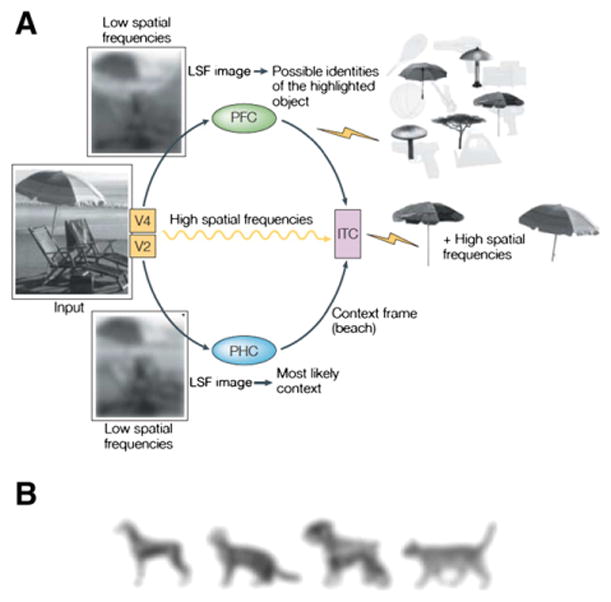Fig. 3.

A. The model for the top–down contextual facilitation of object recognition proposed in Bar (2004). According to this model, low spatial frequencies (LSF) from an input are extracted rapidly to activate an association set with possible interpretations of a target object (e.g., the target object may be an umbrella or a lamp, but it is certainly not a lighthouse or a dog). The later arrival of high spatial frequencies determines the exact representation of the specific exemplar (e.g., the target object is indeed a beach umbrella). For simplicity, only the relevant cortical connections and flow directions of the proposed mechanisms are illustrated here. ITC, inferior temporal cortex; LSF, low spatial frequencies; PFC, prefrontal cortex; PHC, parahippocampal cortex, V2 and V4, early visual areas. ‘Lightening strike’ symbols represent activation of representations. B. Individual members of basic-level categories tend to look similar to each other and look different from members in other categories (e.g., dog vs. cat). LSF representations are often sufficient for distinguishing basic-level object categories.
Copyrights © Nature Publishing Group and MIT Press. Adapted with permission.
